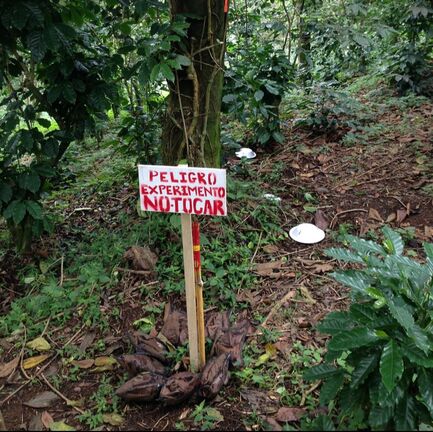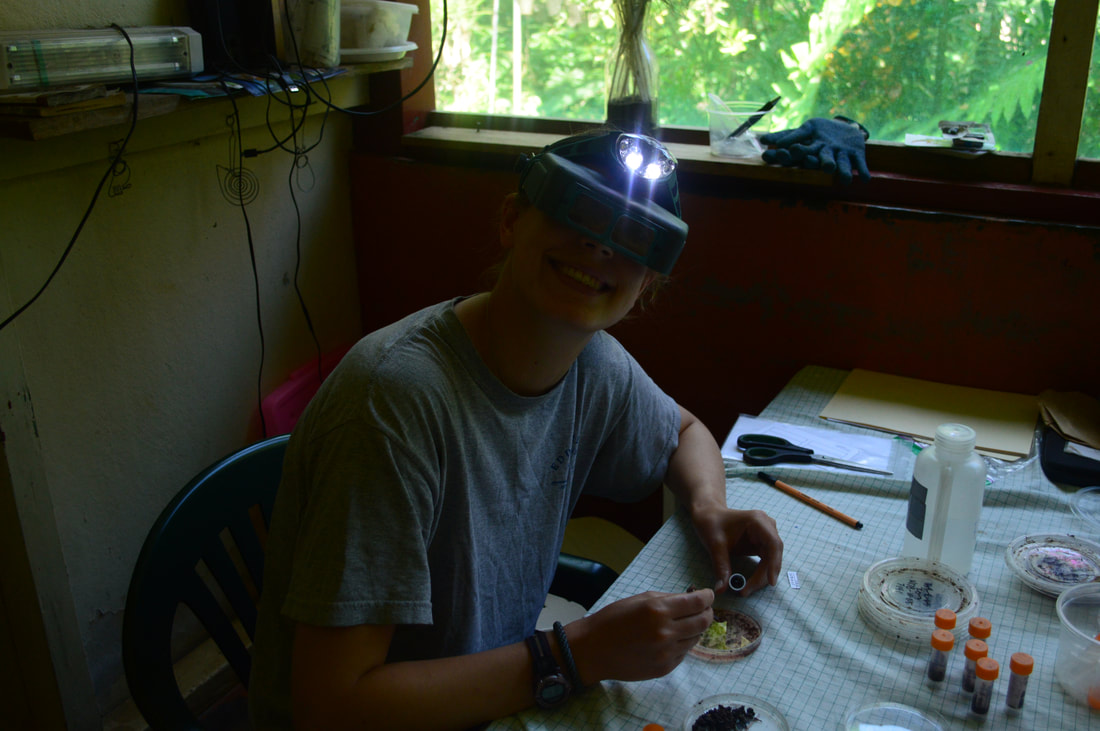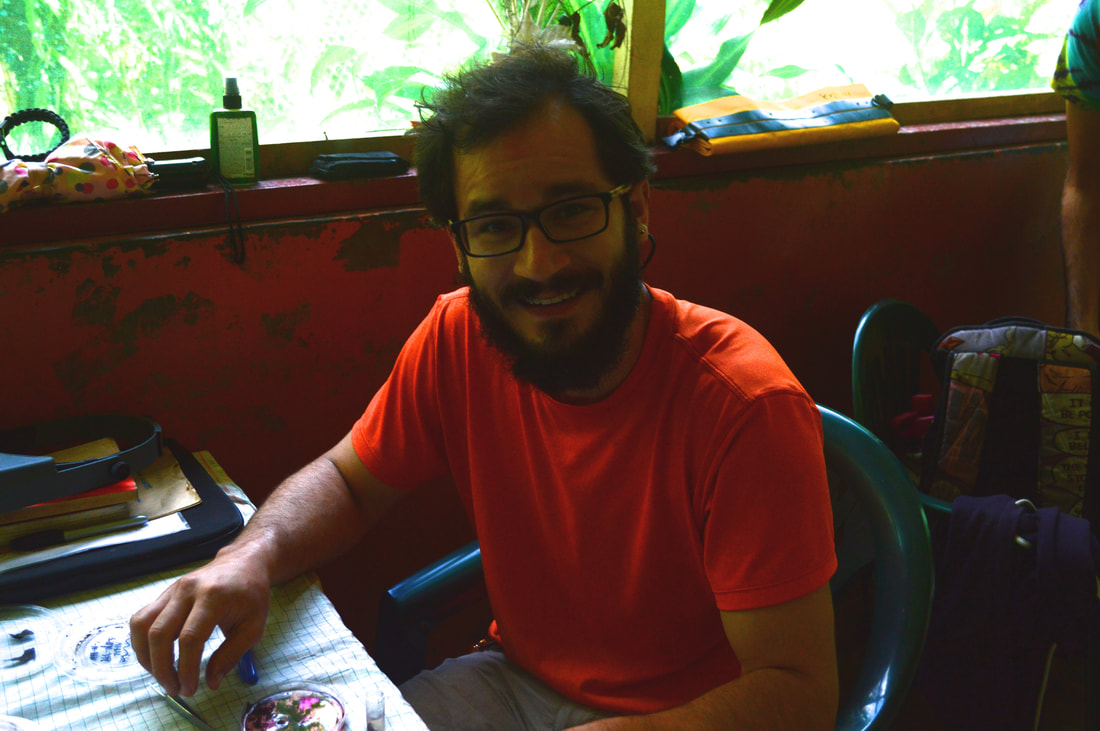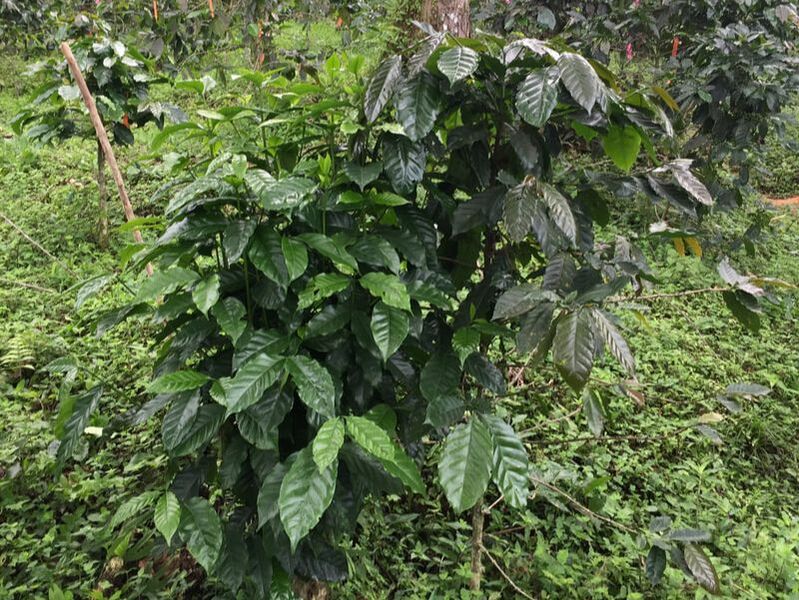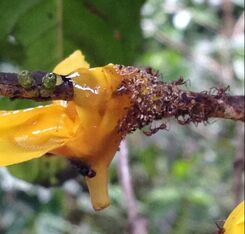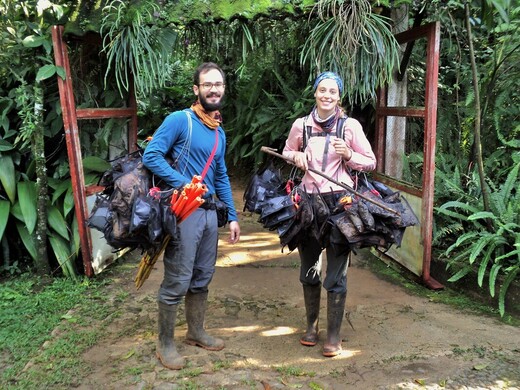|
Keystone ants and ecosystem function:
Keystone species are categorized by their widespread impact. Azteca sericeasur is a keystone ant species in coffee agro-ecosystems, with demonstrated effects on the insect community across trophic levels. We wanted to see if the outsized impact of this arboreal ant influence decomposition dynamics. We asked: do Azteca sericeasur affect the decomposition of Inga micheliana leaf litter? To answer this question we sampled the invertebrate community around sites with and without A. sericeasur nests using tuna baits (for ants) and pitfall traps. We used litterbags to measure the decomposition rates of Inga micheliana leaf litter, a common shade tree on coffee farms in the region. |
Contrary to previous studies, we found no decrease in ant species richness around shade trees with A. sericeasur nests. Ultimately, there was no difference in the decomposer community or leaf litter decay in the presence of A. sericeasur. However, the ant community composition did change around A. sericeasur nests, so we suspect that a community of ants that is not in direct competition with A. sericeasur is able to persist in the leaf litter around the shade trees with the A. sericeasur nests.
You can find the full paper published in Biotropica.
Collaborators: Bolivar Aponte-Rolon
Research assistants: Megan Shibley
Collaborators: Bolivar Aponte-Rolon
Research assistants: Megan Shibley
|
You can read the full paper published in Oikos.
Collaborators: Zachary Haijan-Forooshani, Nicholas Medina and John Vandermeer
Collaborators: Zachary Haijan-Forooshani, Nicholas Medina and John Vandermeer
